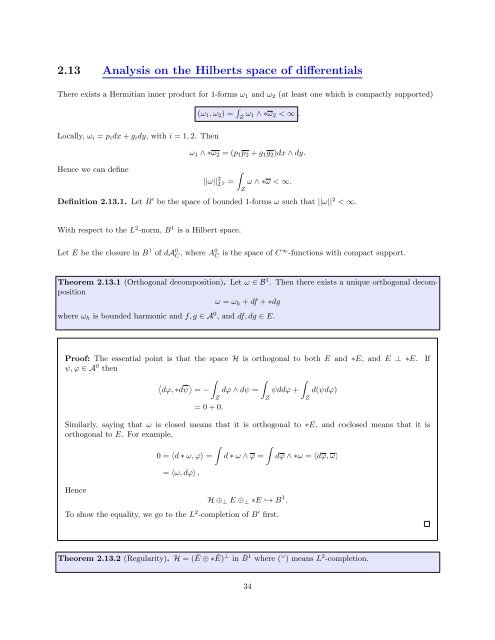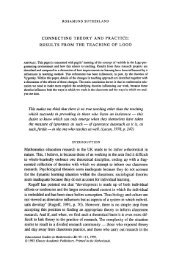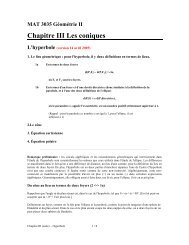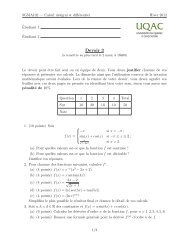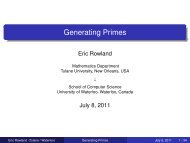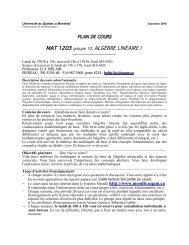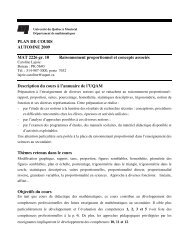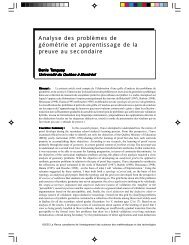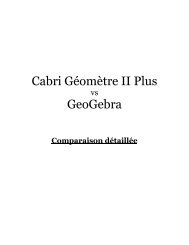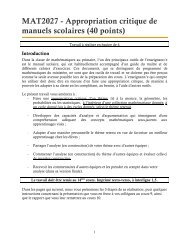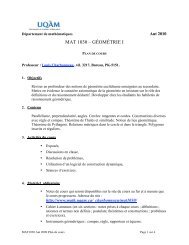COMPLEX GEOMETRY Course notes
COMPLEX GEOMETRY Course notes
COMPLEX GEOMETRY Course notes
You also want an ePaper? Increase the reach of your titles
YUMPU automatically turns print PDFs into web optimized ePapers that Google loves.
2.13 Analysis on the Hilberts space of differentials<br />
There exists a Hermitian inner product for 1-forms ω 1 and ω 2 (at least one which is compactly supported)<br />
(ω 1 , ω 2 ) = ∫ Z ω 1 ∧ ∗ω 2 < ∞ .<br />
Locally, ω i = p i dx + g i dy, with i = 1, 2. Then<br />
ω 1 ∧ ∗ω 2 = (p 1 p 2 + g 1 g 2 )dx ∧ dy.<br />
Hence we can define<br />
∫<br />
||ω|| 2 L = ω ∧ ∗ω < ∞.<br />
2<br />
Definition 2.13.1. Let B ′ be the space of bounded 1-forms ω such that ||ω|| 2 < ∞.<br />
Z<br />
With respect to the L 2 -norm, B 1 is a Hilbert space.<br />
Let E be the closure in B 1 of dA 0 C , where A0 C is the space of C∞ -functions with compact support.<br />
Theorem 2.13.1 (Orthogonal decomposition). Let ω ∈ B 1 . Then there exists a unique orthogonal decomposition<br />
ω = ω h + df + ∗dg<br />
where ω h is bounded harmonic and f, g ∈ A 0 , and df, dg ∈ E.<br />
Proof: The essential point is that the space H is orthogonal to both E and ∗E, and E ⊥ ∗E.<br />
ψ, ϕ ∈ A 0 then<br />
∫<br />
∫ ∫<br />
〈 〉<br />
dϕ, ∗dψ = − dϕ ∧ dψ = ψddϕ + d(ψdϕ)<br />
Z<br />
Z<br />
Z<br />
= 0 + 0.<br />
If<br />
Similarly, saying that ω is closed means that it is orthogonal to ∗E, and coclosed means that it is<br />
orthogonal to E. For example,<br />
∫<br />
∫<br />
0 = 〈d ∗ ω, ϕ〉 = d ∗ ω ∧ ϕ = dϕ ∧ ∗ω = 〈dϕ, ω〉<br />
= 〈ω, dϕ〉 .<br />
Hence<br />
H ⊕ ⊥ E ⊕ ⊥ ∗E ↩→ B 1 .<br />
To show the equality, we go to the L 2 -completion of B ′ first.<br />
Theorem 2.13.2 (Regularity). H = (Ě ⊕ ∗Ě)⊥ in ˇB 1 where ( ∨ ) means L 2 -completion.<br />
34


